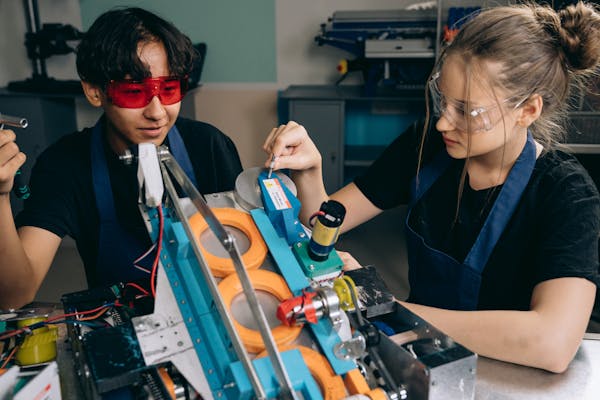In the rapidly evolving field of artificial intelligence, one groundbreaking concept has emerged as a true game-changer for creative applications: Generative Adversarial Networks (GANs). GANs are a class of machine learning models that have gained immense popularity for their ability to generate realistic and high-quality data, ranging from images and music to text and even entire video sequences. In this article, we will explore the fundamentals of GANs, their architecture, and their wide-ranging applications, shedding light on how these ingenious algorithms are revolutionizing artificial creativity.
Introduction to Generative Adversarial Networks (GANs)
Introduced by Ian Good fellow and his colleagues in 2014, GANs are a type of generative model consisting of two neural networks pitted against each other in a mini-game scenario: the generator and the discriminator. The generator aims to produce synthetic data that resembles the real data, while the discriminator’s role is to distinguish between real and generated data. Both networks are engaged in an ongoing adversarial battle where they continually learn from each other, resulting in the generator gradually improving its ability to produce increasingly convincing data.
The Architecture of GANs
The architecture of GANs is deceptively simple yet highly effective. Let’s delve into the components of GANs:
- Generator: The generator is responsible for generating synthetic data. It starts with random noise as input and transforms it into data that ideally resembles the real data distribution. The generator’s goal is to produce data that is indistinguishable from the real data so that the discriminator is unable to differentiate between the two.
- Discriminator: The discriminator acts as the adversary to the generator. It takes both real and generated data as input and aims to classify them correctly. The discriminator is trained on a combination of real data and data generated by the current state of the generator. Its objective is to become more accurate in distinguishing between real and fake data.
The training process of GANs follows a back-and-forth procedure. Initially, the generator’s performance is poor, and its generated data is easy for the discriminator to recognize as fake. However, as the generator receives feedback from the discriminator, it improves its output quality and becomes more adept at generating realistic data. At the same time, the discriminator learns from the changing nature of the generator’s output and adjusts its decision-making criteria, making it more challenging for the generator to fool the discriminator.
Applications of GANs
The potential of GANs spans a wide range of applications, with their impact felt across various industries and creative endeavors:
- Image Synthesis: GANs have revolutionized image synthesis, enabling the generation of realistic images of people, objects, and scenes. These applications find use in creative arts, design, and even deepfake technology.
- Style Transfer: GANs facilitate style transfer, allowing the transformation of images from one artistic style to another while preserving their content. This technology has inspired creative applications in digital art and design.
- Data Augmentation: GANs are used to augment datasets with synthetic samples, which can improve the performance of machine learning models by providing more diverse training data.
- Drug Discovery: In the pharmaceutical industry, GANs have been employed to design novel molecules with specific properties, potentially accelerating drug discovery and development.
- Text-to-Image Generation: GANs have been used to convert textual descriptions into corresponding visual representations, enabling applications in generating images from textual prompts.
- Super-Resolution Imaging: GANs can upscale low-resolution images to higher resolutions, enhancing image quality and detail, which has applications in medical imaging and enhancing visual content.
Challenges and Future Directions
Despite their significant achievements, GANs still face certain challenges and limitations. One primary concern is the potential for generating biased or harmful content. Ensuring that GANs produce ethical and unbiased outputs remains an ongoing research area.
Furthermore, training GANs can be notoriously difficult and computationally expensive. Ensuring stability during training and avoiding issues like mode collapse (where the generator produces limited variations) are active areas of research.
In the future, advancements in GANs may lead to even more impressive applications, pushing the boundaries of artificial creativity and further blurring the lines between human-generated and AI-generated content.
Conclusion
Generative Adversarial Networks have emerged as a groundbreaking approach in the field of artificial intelligence, enabling machines to display creative capabilities that were once deemed exclusive to humans. Their unique architecture and adversarial training process have led to numerous applications across diverse industries, from art and design to drug discovery and image synthesis. As researchers continue to refine and expand GANs, they hold the potential to unlock a new era of artificial creativity, transforming the way we interact with and perceive artificial intelligence in the years to come.
